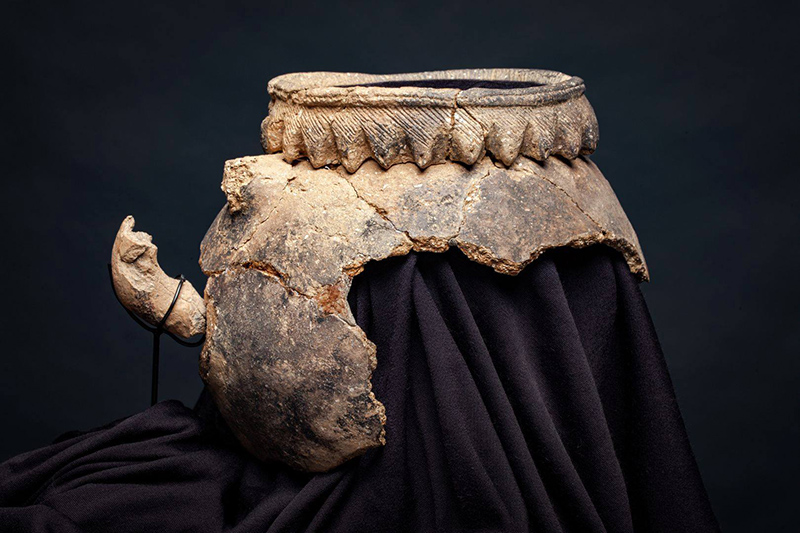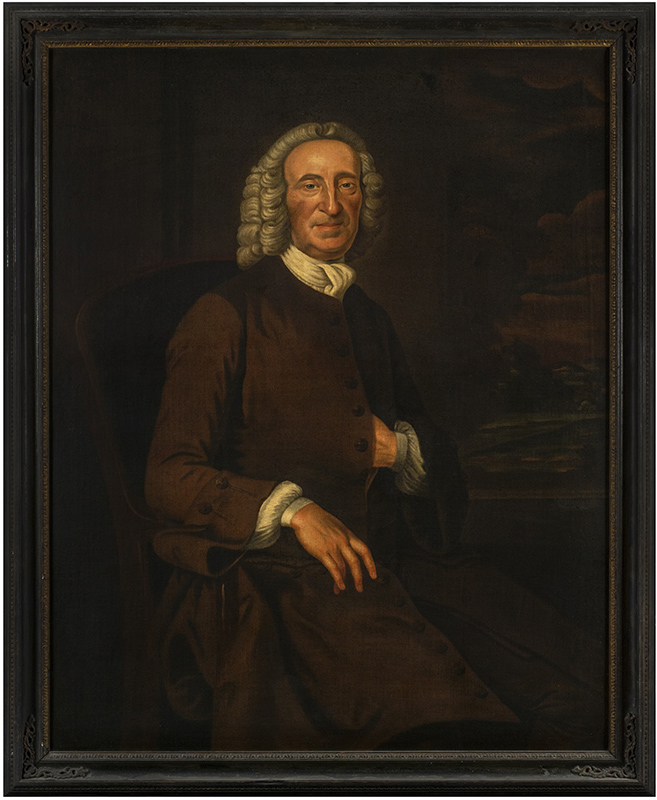The Jupiter Hammon Project: Confronting Slavery at Preservation Long Island’s Joseph Lloyd Manor
by Lauren Brincat
Our forefathers came from Africa
Tost over the raging main
To a Christian shore there for to stay
And not return again.
Dark and dismal was the Day
when Slavery began,
All humble thoughts were put away
then slaves were made by Man.
In 1786, Jupiter Hammon (1711–before 1806), one of our nation’s first published Black American writers and a founder of African American literature, wrote these words while enslaved at Joseph Lloyd Manor. Hammon was 75 years old and had survived a lifetime of enslavement by three generations of the Lloyd family of Long Island, NY. Informed by his deep Christian faith, Hammon’s writings illuminate the profound social and moral conflicts of slavery in the early United States. The above passage from Hammon’s unpublished “An Essay on Slavery” is his most overt denouncement of American chattel slavery.1
Hammon was one of only two enslaved writers to publish essays or poetry during the 18th century, along with Phillis Wheatley Peters (1753–1784). Hammon is known to have authored at least ten pieces of poetry and prose, including his poem “An Evening Thought,” written on Christmas Day in 1760, “An Address to Phillis Wheatley” (1778), and “An Address to the Negroes in the State of New-York” (1786).2 The latter was dedicated to the members of the African Society, an early Black political activist organization in New York City. During Hammon’s long lifetime, he bore witness to the codification of oppressive “slave laws,” the Revolutionary War, the founding of a nation, and the beginning of the gradual abolition of chattel slavery. At Joseph Lloyd Manor, Hammon’s own words provide the rare opportunity to interpret this history through the perspective of an enslaved person who experienced it.
Although Jupiter Hammon’s writings are foundational documents in American history and literature, his voice cannot speak for all the people the Lloyds enslaved over four generations—people who, despite the dehumanizing conditions in which they lived, formed communities and asserted their own identities. Largely ignored by researchers in the past, their stories are emerging as we carefully re-examine extensive Lloyd family records.
In March of 2019, Preservation Long Island launched the Jupiter Hammon Project, a long-term initiative to transform how we engage our community in the interpretation of Lloyd Manor’s history of enslavement. A principal objective of the project is to decentralize the institutional perspective in favor of an interpretive plan that is guided by the interests of the communities we seek to represent. It also aims to present a full and unvarnished view of the past that encourages meaningful dialogue between the region’s history of enslavement and the systemic racial disparities that people of color living on Long Island continue to experience today.
Joseph Lloyd Manor (figure 1) is an imposing Georgian-style residence originally constructed around 1767 and located on Long Island’s North Shore. Perched upon a hill overlooking a protected harbor of the Long Island Sound, it was the second manor house built on the Manor of Queens Village, a 3,000-acre plantation established through royal patent in 1685. The enslavement of Black and Indigenous people built and sustained the economic and social life of the Lloyds, whose familial, religious, and commercial ties extended across New England, England, and the Caribbean.
For most of the colonial period, Long Island held one of the largest enslaved populations anywhere in the North. Provisioning plantations like Queens Village played a critical role in the larger Atlantic economy by supplying massive enslaved workforces on West Indian plantations with foodstuffs and other goods. This history is traceable through Jupiter Hammon’s own story. His paternal grandparents, Tammero (c. 1630–c. 1690) and Oyou (c. 1630–c. 1690), were born in West Africa, kidnapped into slavery, and enslaved by Henry Lloyd’s maternal grandparents in Barbados and later at Sylvester Manor, a provisioning plantation on Shelter Island.3 They created a family at this new location where Obium (c. 1668–c. 1767), Jupiter’s father, was born. They maintained their cultural traditions, and Oyou may have made or used a ceramic vessel excavated from the plantation that blended Indigenous and European designs with West African firing techniques (figure 2).
Henry Lloyd (1685–1763) of Boston was the first of the Lloyd family to colonize the Matinecock lands of Caumsit and have a house built at what he referred to as Queens Village.4 In 1711, Henry recorded in his accounts the birth of a baby boy he considered his property, a child named Jupiter. The births and premature deaths of at least nine other children born to enslaved parents are listed: Kit, Samuel, Eliakim, Anna, Sarah, Patricia, Elkanah, Priscilla, and Cloe. When Henry Lloyd died in 1763, families were dismantled as individuals were bequeathed to Henry’s surviving sons in either Boston, Connecticut, or Long Island. Joseph Lloyd (1716–1780) (figure 3) inherited Jupiter Hammon, who remained at Queens Village, separated from his closest living relatives, the children of his brother Obediah (c. 1715–c. 1755).
In 1765, Joseph commissioned Abner Osborn (1728–1811), a Connecticut carpenter, to build a house suitable to Lloyd’s wealth and social standing. The center-hall structure featured a pair of chimneys, a grand staircase, fielded paneling, and elegant moldings. Although the Lloyds and the people they enslaved lived under the same roof, rear passageways and inferior decorative treatments segregated the worlds of the enslavers and the enslaved, both physically and psychologically.
Joseph Lloyd Manor has dramatically evolved to satisfy the changing needs and aesthetics of its occupants, but its 18th-century core remains intact. In 1982, Preservation Long Island (formerly Society for the Preservation of Long Island Antiquities) opened the house to the public after a decade-long preservation project involving leaders in the fields of architectural history, historic preservation, and decorative arts. An exemplary project for the time, the outcome was a series of historically accurate, high-style period rooms furnished according to the 1793 inventory of John Lloyd II (1745–1792) (figure 4).
Despite the documentation of ten enslaved people in the inventory, these spaces emphasized an elite white cultural perspective that erased the presence of the men, women, and children the Lloyds enslaved. A decade later, staff installed a conjectural “Slaves’ Quarters” (figure 5). Although the room acknowledges the lives of John and Judith Potter, Hannah, Jupiter Hammon, Boston, Benjamin, Samuel, Edward, and Sarah, their stories remained marginalized. Overshadowed by a great spinning wheel, the installation oversimplifies a multi-generational story of survival and resistance. Nearing 30 years old, this interpretation has not changed.
In collaboration with a community advisory council and institutional partners across the region, Preservation Long Island launched the first phase of the Jupiter Hammon Project with a series of virtual public roundtables in August 2020. Each featured moderated panel discussions that explored Long Island in the Black Atlantic, the voice of Jupiter Hammon, and interpreting enslavement at historic sites. The panels were followed by break-out meetings for community conversations. This feedback will propel the project forward as we continue to work with stakeholders and descendants onsite.
With the close of the first phase of the Jupiter Hammon Project, our community has made it clear that relevance and context are crucial to their interest and engagement. Emerging themes emphasize a desire for greater knowledge about the pervasive reality of enslavement in the North, the preservation of African traditions, the relationship between the house and its landscape, and the interconnectedness of Black and Indigenous communities. While there is no end date or predetermined outcome for the Jupiter Hammon Project, we hope to inspire those who visit Joseph Lloyd Manor to seek out marginalized voices in history.
1 For a discussion about this poem and its recent discovery see Cedrick May and Julie McCown, “‘An Essay on Slavery’: An Unpublished Poem by Jupiter Hammon,” Early American Literature, 48, 2 (2013): 457-71.
2 For an edited volume of Jupiter Hammon’s writings, see Cedrick May, ed. The Collected Works of Jupiter Hammon: Poems and Essays. Knoxville, TN: University of Tennessee Press, 2017.
3 For an in-depth study of Jupiter Hammon’s family history see Charla E. Bolton and Reginald H. Metcalf, Jr. “The Migration of Jupiter Hammon and His Family: From Slavery to Freedom and its Consequences,” Long Island History Journal, 23, 2 (2013).
4 The name Caumsit is recorded in a 1654 deed between Matineock Sagamores, Ratiocan and Asiepam, and three English colonizers, Samuel Mayo, Daniel Whitehead, and Peter Wright. MSS Collection BV Lloyd family, New-York Historical Society Library.
Lauren Brincat is the Curator of Preservation Long Island.
A print version of this article was published in The Magazine of the Decorative Arts Trust, one of our most popular member benefits. Join today!





